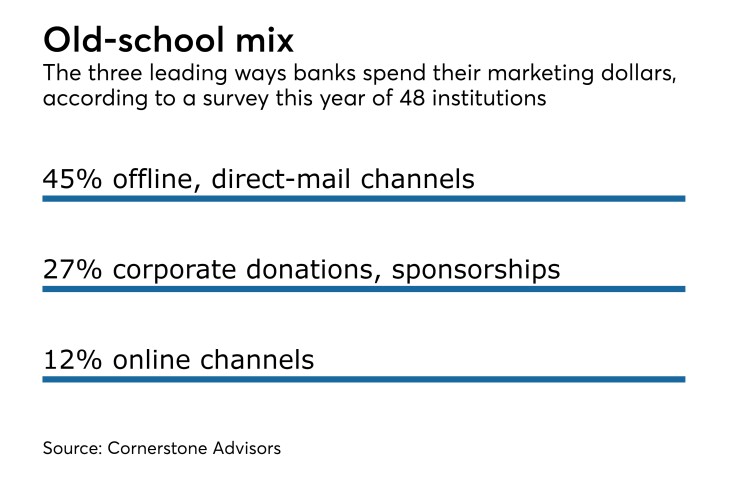Social media is meant for more than delivering financial advice and marketing messages to consumers, financial institutions are starting to discover.
Their new targets? Business customers.
American Express recently turned to Facebook, not direct mailings or even traditional digital advertising like banner ads, to drive sales of its business platinum card OPEN. The calculus was simple: That’s where the decision-makers hang out, said Tatyana Zlotsky, vice president and general manager of acquisition and digital marketing for American Express OPEN.
“Our current and prospective customers are business owners and employees, but most importantly they are people — people who spend their time on social media,” Zlotsky said. “We have to meet them where they are … and establish a relationship with a B-to-B audience on social platforms.”
American Express chose Facebook’s

The American Express ad ended with an “Apply Now” button so people could sign up for the card within the Canvas system itself.
It was directed at an audience that was built from American Express’ first-party data and at a “look-alike audience” that was based on profiles of the people who had previously applied for the card, Zlotsky said. The campaign proved a success; it led to a 37% increase in conversions over the previous marketing effort for the card, and it reached more than 4.5 million people, according to Amex.
According to Zlotsky, the interactive ad was the ideal format for social media such as Facebook — a medium that already encourages users to play games and watch video content and engage in other hands-on activities.
“We brought much of our traditional digital experience into the Canvas unit on Facebook and enhanced it with video and animations that helped us to tell the story of our business platinum card,” she said. “By bringing the full story into Facebook, we could get interested small-business owners directly to a card application page more seamlessly.”
Banks that do social well “realize it’s more than just another channel,” said Deepanjan De, U.S. head of the financial services industry segment for Facebook. “It offers them a unique ability to personalize content and take advantage of digital, and there is a clear shift to digital. People on average consume up to six hours of [digital] content per day.”
Banks can also use nonadvertisement social media messages to attract business customers, said CarrieAnne Cormier, assistant vice president of retail operations and strategy at the $1.2 billion-asset Avidia Bank. The Hudson, Mass.,
For example, if a new business opens in the bank’s market, “we’ll tweet about how glad we are they moved into town, or we’ll share their story on Facebook,” Cormier said. “Then maybe we’ll cross-promote some of their events on our social channels.”
This kind of interaction has proven effective at gaining Avidia new commercial clients; after experiencing it firsthand, one local business owner came into a branch and said, “We need to bank with you guys” and became a customer, Cormier said.
She added that social media augments the bank’s traditional business-to-business marketing efforts, which typically for banks is built through establishing personal connections.
“Branch managers will make calls and connect with these businesses, and they already know about us through the social media,” Cormier said. “It gets them a foot in the door versus just regular cold-calling. It complements our more traditional strategy.”
Indeed, social media could be an effective digital companion to the traditional cocktail-party networking method of acquiring commercial clients, said Sam Kilmer, senior director at Cornerstone Advisors.
“The [old] commercial banking concept of ‘feet on the street’ has changed,” he said. “In-person meetings and deals can sometimes be done digitally now.”
Most banks have a centralized social media unit for consumer banking, Kilmer said, but on the commercial side it is largely left up to the individual lenders or treasury managers. While retaining some aspect of this individuality is necessary for these employees to build relationships and ultimately acquire new commercial customers, there still need to be “basic standards across the organization,” Kilmer said.
Done effectively, it is essentially “the marriage of networking and content marketing,” Kilmer said.





